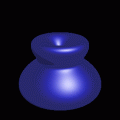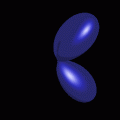
High Precision Measurements for fundamental Physics

 |
High Precision Measurements for fundamental Physics |
 |
Welcome to the hydrogen projectWe are part of the group of Prof. T. W. Hänsch and located at the Max-Planck Institute for Quantum Optics Garching/Germany.  Precision Spectroscopy of Atomic Hydrogen
Precision spectroscopy of atomic hydrogen has motivated
advances in nonlinear laser spectroscopy and optical frequency metrology over
more than three decades, including the laser frequency comb technique
highlighted in the citation for the 2005 Nobel Prize in physics. Past spectroscopic measurements of the ultraviolet 1S-2S
two-photon resonance in hydrogen and deuterium in our laboratory have led to
new tests of quantum electrodynamic theory, and they have yielded accurate
values of the Rydberg constant, the rms charge radius of the proton, and the
structure radius of the deuteron. In addition, our measurements were among the
first laboratory experiments to set stringent limits to possible slow variations
of fundamental constants.
Until a few years ago, the primary challenge in hydrogen spectroscopy has been the precise measurement of the frequency of laser light. Since the advent of the laser frequency comb technique, the challenge has moved to the understanding and control of systematic line shifts, which are particularly serious for very light atoms that can not be laser cooled. We have made major advances towards future improved measurements of the 1S-2S transition frequency. In particular, we are now routinely achieving sub-Hz line widths with diode-laser based solid state laser systems at 972nm, and we are exploring spectroscopy at lower laser intensities and reduced ac Stark shifts by detecting protons after photo ionization of the metastable 2S atoms rather than Lyman-alpha photons. To verify such advances and to test predicted higher order quantum electrodynamic corrections, we have been performing new precise optical measurements of the hyperfine splitting of the 1S-2S resonance. A measurement of the 1S-2S frequency with the highest possible precision is of particular interest as a reference for future experiments with anti hydrogen, in order to detect possible small differences between matter and antimatter. We are participating in the ATRAP anti hydrogen spectroscopy collaboration at CERN. For the next absolute frequency measurement, we will rely once more on the transportable cesium fountain microwave clock PHARAO of the Observatoire in Paris. Future experiments will benefit from a long-haul optical fiber link for clock synchronization between our Garching laboratory and the stationary microwave and optical atomic clocks at the PTB in Braunschweig that is now being implemented within a collaboration led by the PTB.
last change September 18 2008 |